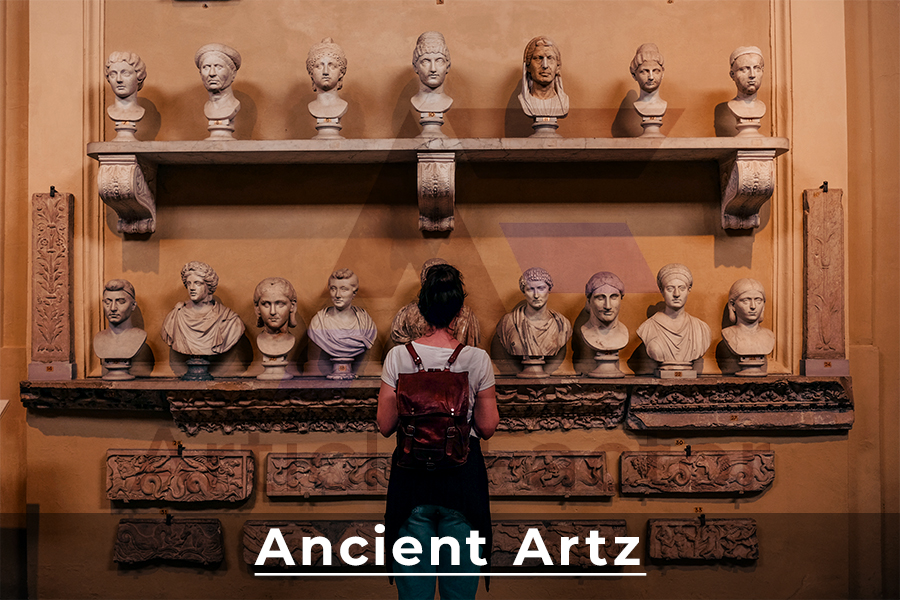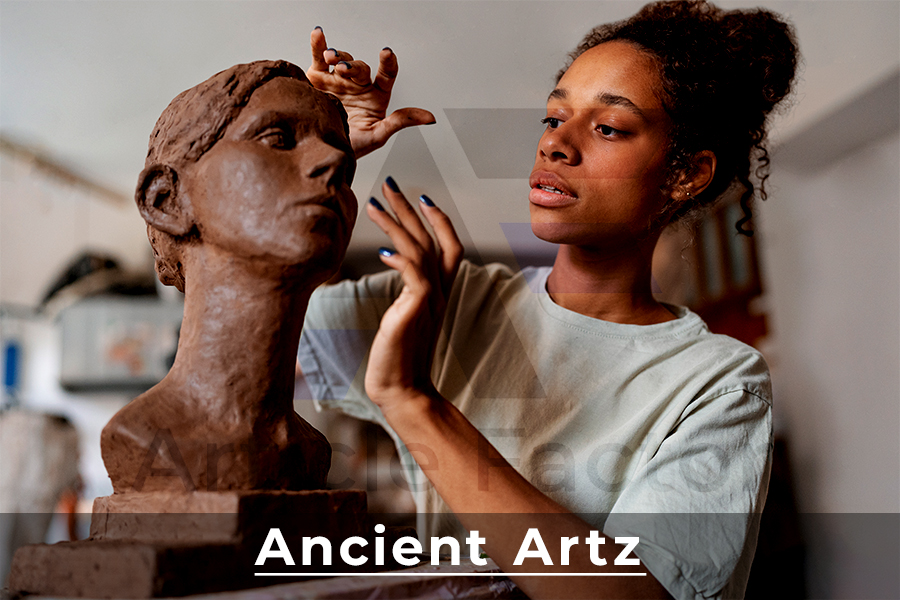The term “Ancient Artz” conjures images of timeless artifacts, evocative sculptures, and vivid paintings that narrate the story of humanity’s cultural and creative evolution. Spanning millennia, ancient art encapsulates the beliefs, emotions, and ingenuity of civilizations long past. From the prehistoric cave paintings of Lascaux to the sophisticated frescoes of ancient Rome, each piece serves as a window into a bygone era. This article delves into the multifaceted world of ancient artz, exploring its origins, significance, and enduring legacy.
The Origins of Ancient Artz
Ancient art traces its roots to the dawn of human civilization. Early humans, driven by the need to communicate and express themselves, began creating rudimentary art forms. The Paleolithic era, approximately 40,000 years ago, marks the earliest known period of artistic activity. During this time, humans crafted:
- Cave Paintings: Found in locations such as Lascaux, France, and Altamira, Spain, these paintings primarily depict animals and hunting scenes. They are believed to have served ritualistic or educational purposes.
- Petroglyphs: Rock carvings etched onto surfaces, these artworks provide insights into the daily lives and spiritual beliefs of early societies.
- Sculptures: Small figurines like the Venus of Willendorf, representing fertility, highlight the symbolic and spiritual dimensions of early art.
Regional Highlights of Ancient Artz
Each ancient civilization developed unique artistic styles and techniques that reflected their culture, religion, and technological advancements. Here are some notable contributions:
Mesopotamian Art:
- Often referred to as the “cradle of civilization,” Mesopotamia’s art reflects its complex society.
- Ziggurats, intricate bas-reliefs, and cylinder seals are hallmarks of this region’s artistry.
- Works often depicted gods, kings, and mythological narratives, underscoring the close ties between art and religion.
Egyptian Art:
- Characterized by its rigid and symbolic nature, Egyptian art served primarily religious and funerary purposes.
- Iconic elements include hieroglyphs, statues of deities, and grandiose monuments like the Great Pyramids and the Sphinx.
- The use of vibrant colors and precise proportions showcased their advanced understanding of aesthetics.
Greek and Roman Art:
- Ancient Greece laid the foundation for Western art, emphasizing realism, proportion, and humanism.
- The Romans, inspired by Greek art, excelled in engineering and monumental structures, creating the Colosseum, aqueducts, and mosaics.
- These cultures’ sculptures and frescoes celebrated gods, emperors, and mythological tales.
Indus Valley Civilization:
- Known for its advanced urban planning, the art of the Indus Valley includes seals, pottery, and figurines.
- The famous “Dancing Girl” sculpture exemplifies their skill in bronze casting and their celebration of human form.
Chinese Art:
- Ancient Chinese art, deeply rooted in philosophy and spirituality, is rich in symbolism.
- Notable contributions include jade carvings, bronze vessels, and the Terracotta Army, reflecting their reverence for ancestors and the afterlife.
Pre-Columbian Art:
- Civilizations like the Maya, Aztecs, and Incas produced intricate gold jewelry, vibrant murals, and colossal stone structures.
- Their art often depicted gods, celestial phenomena, and daily life, serving both practical and ceremonial functions.
The Role and Significance of Ancient Artz

Ancient artz served a variety of purposes, from documenting daily life to expressing spiritual beliefs. Its significance can be categorized as follows:
Religious Expression:
- Many ancient artworks were created to honor deities and ensure divine favor.
- Temples, statues, and religious artifacts often carried symbolic meanings, fostering a connection between the mortal and divine realms.
Historical Documentation:
- Art was a means to record events, societal norms, and achievements.
- For instance, Egyptian hieroglyphs and Mesopotamian cuneiform depict wars, treaties, and cultural practices.
Aesthetic Innovation:
- Ancient artists explored techniques and materials that laid the groundwork for modern art.
- Innovations like perspective, symmetry, and naturalism emerged in this era.
Cultural Identity:
- Art unified communities by reflecting shared values, traditions, and beliefs.
- Iconography and motifs often symbolized the distinct identity of a civilization.
Techniques and Materials in Ancient Artz
The tools and materials used by ancient artists were as diverse as the cultures they represented. Common techniques included:
- Carving: Employed in stone, wood, and ivory to create statues, reliefs, and architectural elements.
- Painting: Utilized natural pigments derived from minerals, plants, and animals.
- Pottery: A practical and artistic medium, often adorned with intricate designs.
- Metalwork: Bronze, gold, and silver were used to craft tools, jewelry, and ceremonial objects.
- Weaving: Textiles were not only functional but also a canvas for artistic expression.
The Legacy of Ancient Artz
The influence of ancient artz resonates even today, shaping contemporary art and culture. Its legacy can be observed in:
- Inspiration for Modern Artists:
- The works of Michelangelo, Picasso, and other luminaries draw heavily from ancient art traditions.
- Modern art movements often reinterpret ancient motifs and techniques.
- Preservation of Heritage:
- Museums and archaeological sites worldwide protect and showcase ancient art, fostering cultural appreciation.
- Digital technology enables the restoration and virtual exploration of ancient artifacts.
- Educational Value:
- Ancient art serves as a vital resource for understanding history, anthropology, and human creativity.
- It bridges the gap between past and present, offering timeless lessons in resilience and innovation.
Challenges in Studying Ancient Artz
Despite its significance, the study of ancient art faces numerous challenges:
- Preservation Issues: Natural decay, looting, and environmental factors threaten the integrity of ancient artifacts.
- Interpretation Gaps: Understanding the intent and context of ancient art can be difficult due to linguistic and cultural barriers.
- Ethical Concerns: Debates over the ownership and repatriation of artifacts often arise, highlighting the need for collaborative solutions.
Conclusion
Ancient Artz is not merely a reflection of the past; it is a testament to humanity’s enduring quest for expression and meaning. Its masterpieces, ranging from monumental sculptures to delicate jewelry, continue to inspire and educate. By preserving and studying these treasures, we honor the legacy of our ancestors and ensure that their stories endure for future generations. In the intricate lines of a petroglyph or the sweeping curves of a Greek statue, we find a profound connection to the essence of human creativity—a connection that transcends time and space.
Frequently Asked Questions (FAQs)
What is the significance of ancient art in modern times?
Ancient art serves as a foundation for modern artistic techniques and aesthetics. It also provides insight into historical cultures, fostering a deeper understanding of humanity’s shared heritage.
How were ancient artworks preserved over millennia?
Natural preservation, such as burial under volcanic ash or arid climates, helped protect many artifacts. Modern conservation techniques also play a key role in their maintenance.
Which ancient civilization is known for its monumental architecture?
Several civilizations excelled in monumental architecture, including the Egyptians with their pyramids, the Romans with their aqueducts and amphitheaters, and the Mayans with their stepped pyramids.
What materials were commonly used in ancient art?
Ancient artists used materials like stone, clay, bronze, gold, wood, and natural pigments for their creations, each reflecting the resources available in their regions.
Why is studying ancient art important?
Studying ancient art helps us understand historical societies, their values, and their technological advancements. It also inspires contemporary creativity and innovation.
